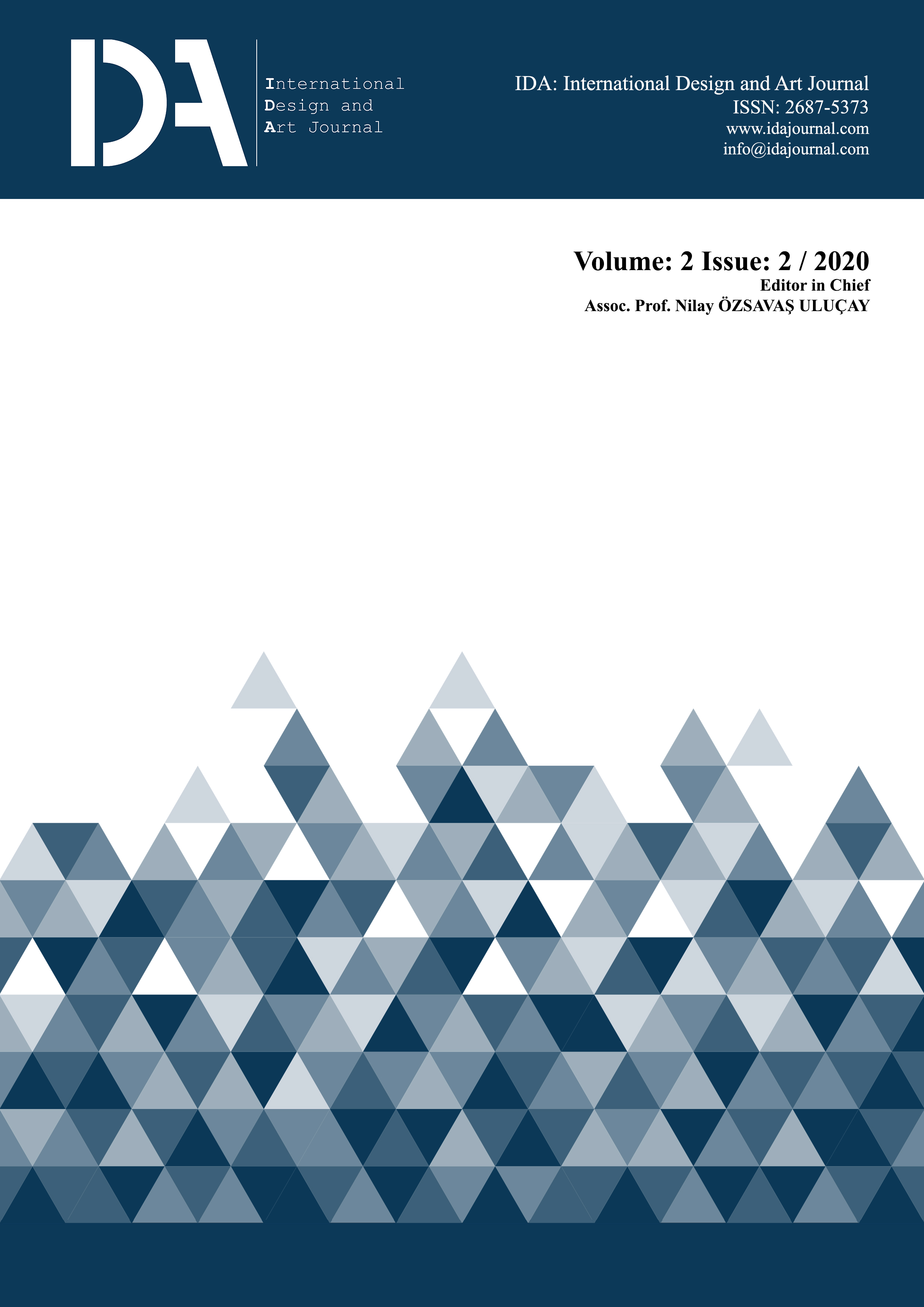Evaluation of Biophilic Design Criteria through Interactive Open Offices
Keywords:
Open Office, Biophilic Design, Nature, Interior SpaceAbstract
It is known that human beings have benefited from nature physically and spiritually since the beginning of their existence. In current office buildings, people have to gather and complete their shifts in crowded, noisy, dark, and tangled large openings that are detached from nature. In addition to the psychological problems caused by being exposed to such work environments, such as inability to concentrate, decrease in work efficiency due to noise pollution, and an insufficient level of privacy; physical problems occurring from reasons such as the inadequacy of indoor air quality and insufficient level of air conditioning are added. The purpose of the study is to investigate what kind of design environments that are susceptible to human psychology and nature can be created by the use of biophilic design elements as natural materials in interior spaces, vegetation, nature-inspired forms, natural ventilation, and natural lighting, and the implementations of biophilic design approach to office buildings by the use of functional and formal features of nature while considering the current needs. The study is conducted by the use of document and descriptive analysis as a qualitative research method. Accordingly, within the scope of the study, open office buildings located in different regions of the world are investigated and evaluated through the applications of the 14-item biophilic design principles and their reflection on the design in terms of visual and sensory stimuli in the interior space scale. As a result, it will be possible to close the gaps of current architecture and design understanding with biophilic design applications and reflect the awareness of the strong bond that fundamentally exists between human and nature in living spaces to space through sensory and visual stimuli. The biophilic design approach that aims to eliminate the problems arising from the living places that are a part of our lives, workplaces, educational buildings, hospitals, the chaos of the bustling city life and to enhance the quality of life of an individual; is significant to be active and successful, maintaining the well-being of individuals and thus, creating happier societies.
References
Altınkoç, Y. Ö. (2005). Büro Binaları Tasarımında Temel İlkeler ve İç Mekan Organizasyonu, Yüksek Lisans Tezi, Mimar Sinan Güzel Sanatlar Üniversitesi Fen Bilimleri Enstitüsü, İstanbul.
Bayraktaroğlu, Ö. E. (2013). Mimarlıkta Ekosistem Düşüncesiyle Tasarlamak, Yüksek Lisans Tezi,İstanbul Teknik Üniversitesi, Fen Bilimleri Enstitüsü, İstanbul.
Browning, W., Ryan, C., Clancy, J. (2014). 14 Patterns of Biophilic Design, Improving Health & Well-Being Build Environment, New York: Terrapin Bright Green.
Cramer, J. S., Browning W. D. (2008). Transforming Building Pratices Through Biophilic Design. Biophilic Design. New Jersey: John Wiley and Sons INC.
Çolak, A. (2004). Duvarlar Anlamsal (Semantik) ve Dizimsel (Sentaktik) Bir Analizi, Doktora Tezi, Karadeniz Teknik Üniversitesi, Fen Bilimleri Enstitüsü, Trabzon.
Erbay, M. (2018). İç Mekanda Güncel Bir Söylem: “Biyofilik Tasarım” ve Uygulama Örneği Olarak Memorial Bahçelievler Hastanesi, 2. Ulusal İç Mimari Tasarım Sempozyumu, KTÜ İç Mimarlık Bölümü, Trabzon, Tasarıma Dair Güncel Söylemler, 23–31.
Fromm, E. O. (1964). The Heart of Man, Ruth Nanda Anshen (Ed). New York: Harper & Row.
Genç, G., Selçuk, S. A., Beyhan, F. (2018). Biyofilik Kavramının Tarihi Binalar Bağlamında Değerlendirilmesi: Tokat Mustafa Ağa Hamamı. Uluslararası Sosyal Araştırmalar Dergisi / The Journal of International Social Research, 58(11), s.363–371.
Kellert, S. R., Heerwagen J. H., Mador M. L., (2008). Biophilic Design - The Theory. Science and Practice of Bringing Buildings to Life., Hoboken, NJ: John Wiley and Sons. Inc.
Louv, R. (2012). Children and the Succes of Biophilic Design. New Jersey: John Wiley and Sons. Inc.
Öztürk, S., Özdemir, Z. (2013). Kentsel Açık ve Yeşil Alanların Yaşam Kalitesine Etkisi “Kastamonu Örneği”. Journal of Forestry Faculty, 13(1), s.109–116.
Saylam, G. (2019). Biyofilik İç Mekan Tasarım Unsurlarının Ev Ortamında Bireyin İyi Olma Haline Onarıcı (Restoratif) Etkileri Üzerine Bir Araştırma. Yüksek Lisans Tezi, Bahçeşehir Üniversitesi, Fen Bilimleri Enstitüsü, İstanbul.
Şenozan, M. I. (2018). İnsan - Mekan - Doğa Etkileşiminin Sürdürülebilir Bir Öğretisi Olarak Biyofilik Tasarım, Yüksek Lisans Tezi, Mimar Sinan Güzel Sanatlar Üniversitesi, Fen Bilimleri Enstitüsü, İstanbul.
Ulrich, R., Parsons, R. (1992). Influences of Passive Experiences with Plants on Individual Well-Being and Health. D. Ref (Ed), The Role of Horticulture in Human Well- Being and Social Development, Timber Press.
Ünlü, E. (2017). Mimarlıkta Biyofili Olgusu ve Sağlık Yapıları, Yüksek Lisans Tezi, Gebze Teknik Üniversitesi Fen Bilimleri Enstitüsü, Gebze.
Wilson E. O. (1984). Biophilia. Massachussets - Boston: Harvard University Press.
Yumuşak, S. (2008). İşgören Verimliliğini Etkileyen Faktörlerin İncelenmesine Yönelik Bir Alan Araştırması, Süleyman Demirel University The Journal of Faculty of Economics and Administrative Sciences, 13(3), s.241–251.
Downloads
Published
Issue
Section
License
IDA: International Design and Art Journal is an open-access academic journal. All publishing rights of the accepted articles are deemed to assign to IDA: International Design and Art Journal. Articles can not be published and copied anywhere, and can not be used without reference.
IDA: International Design and Art Journal is licensed under a Creative Commons Attribution-NonCommercial-ShareAlike 4.0 International License.



